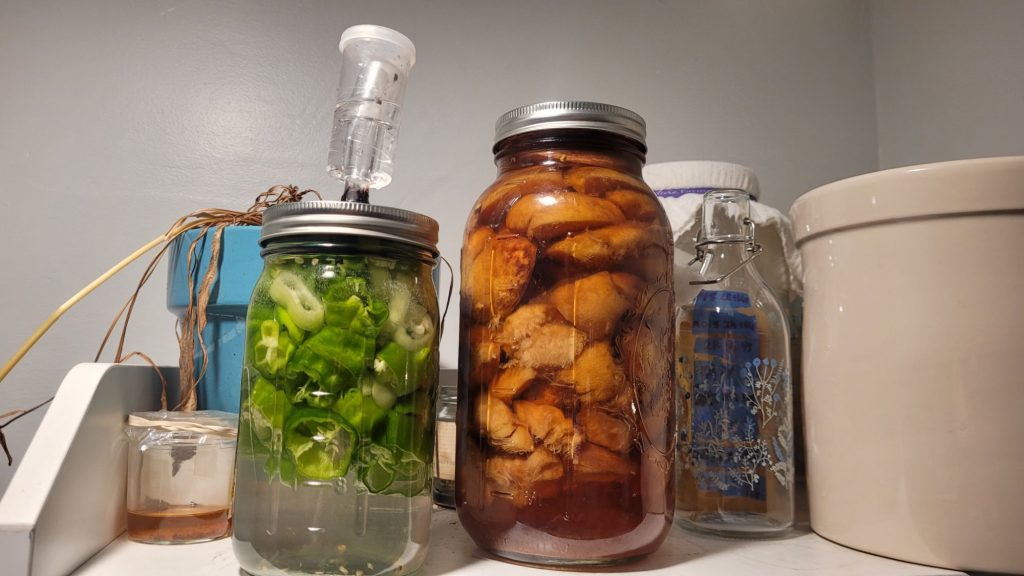
We’re members of the Sienna Farms CSA program which means every other week we get way too much produce for me to handle. Last week we got a big batch of shishito peppers to supplement the other batch of shishito peppers we got the week prior. Now, I love shishitos, but my daughter does not like spicy stuff, and I’m not about to ruin peppers for her by accidentally handing her the one nuke in a batch of duds. So when we get them, I’ll pick at them but they usually go to waste.
Nowadays I’m feeling a lot worse about food waste. It’s a combination of a few things, really. One, this summer has been a particularly weird one, very demonstrative of the changing climate, and I’ve been thinking a lot about how delicate food systems are becoming. Two, I’ve been thinking a lot about labor and effort, and it feels shitty to let the efforts of the farmers go to waste. So I’m trying to do more with preserving food that I get (and using that preserved food regularly).
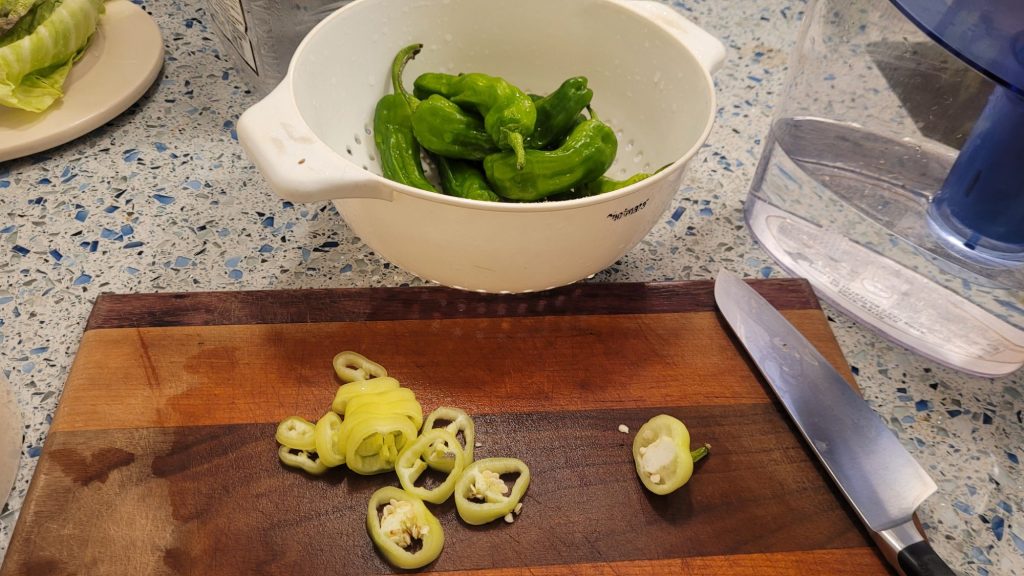
Lacto-fermenting is a super easy way to preserve food. I’m not gonna write up a whole thing about how or why it works, but the basic principle is you submerge produce in salt water of a particular salinity and let lactobacillus bacteria do its natural thing. The end result is basically pickles. It’s actually how sour pickles are made; leaving cucumbers in a brine for a week or two and jarring them.
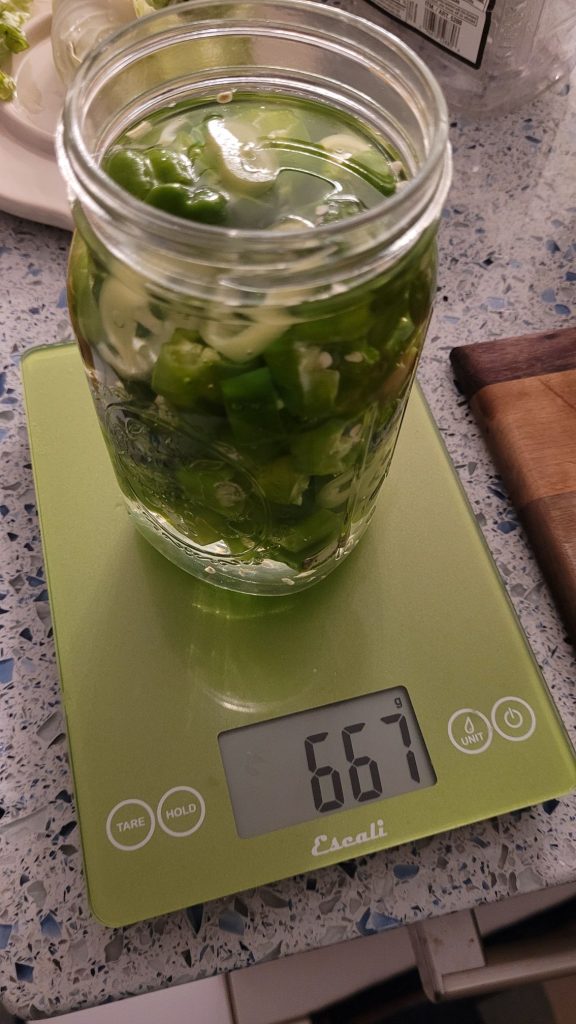
I did some brief research and decided these shishitos would get chopped up and left in a 4% salt brine. 4% means that the weight of the salt in the brine is 4% of the weight of the water. 667g of water, 26g of salt, ~4% brine. For lacto fermentation, you at minimum need 3% for safety’s sale, but changing the salinity does different things to the resulting product. Don’t ask me what the different things are; that’s why this log is here.
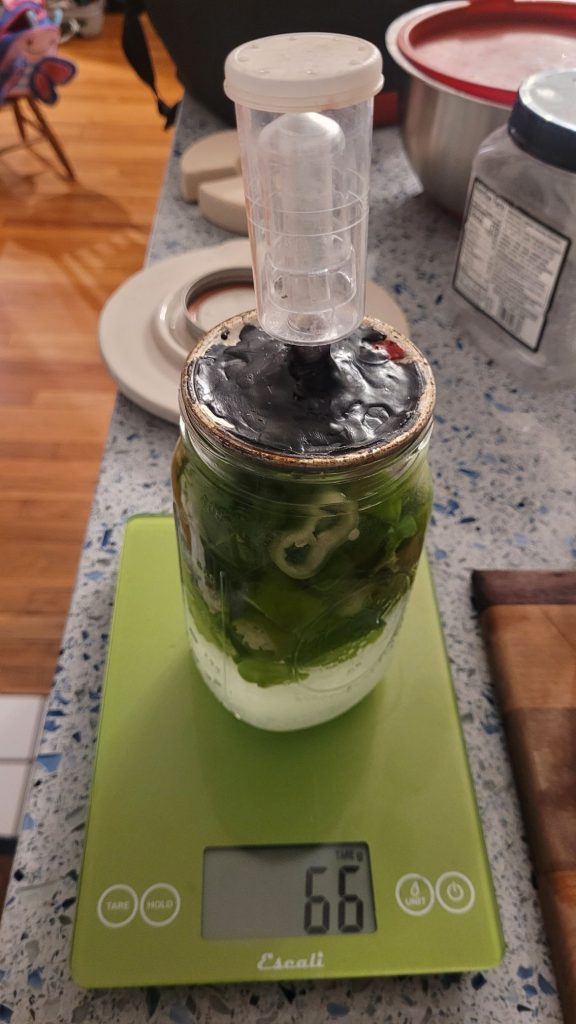
These guys will hang out on my shelf for at least two weeks, maybe more, until getting a proper top and going in my fridge.

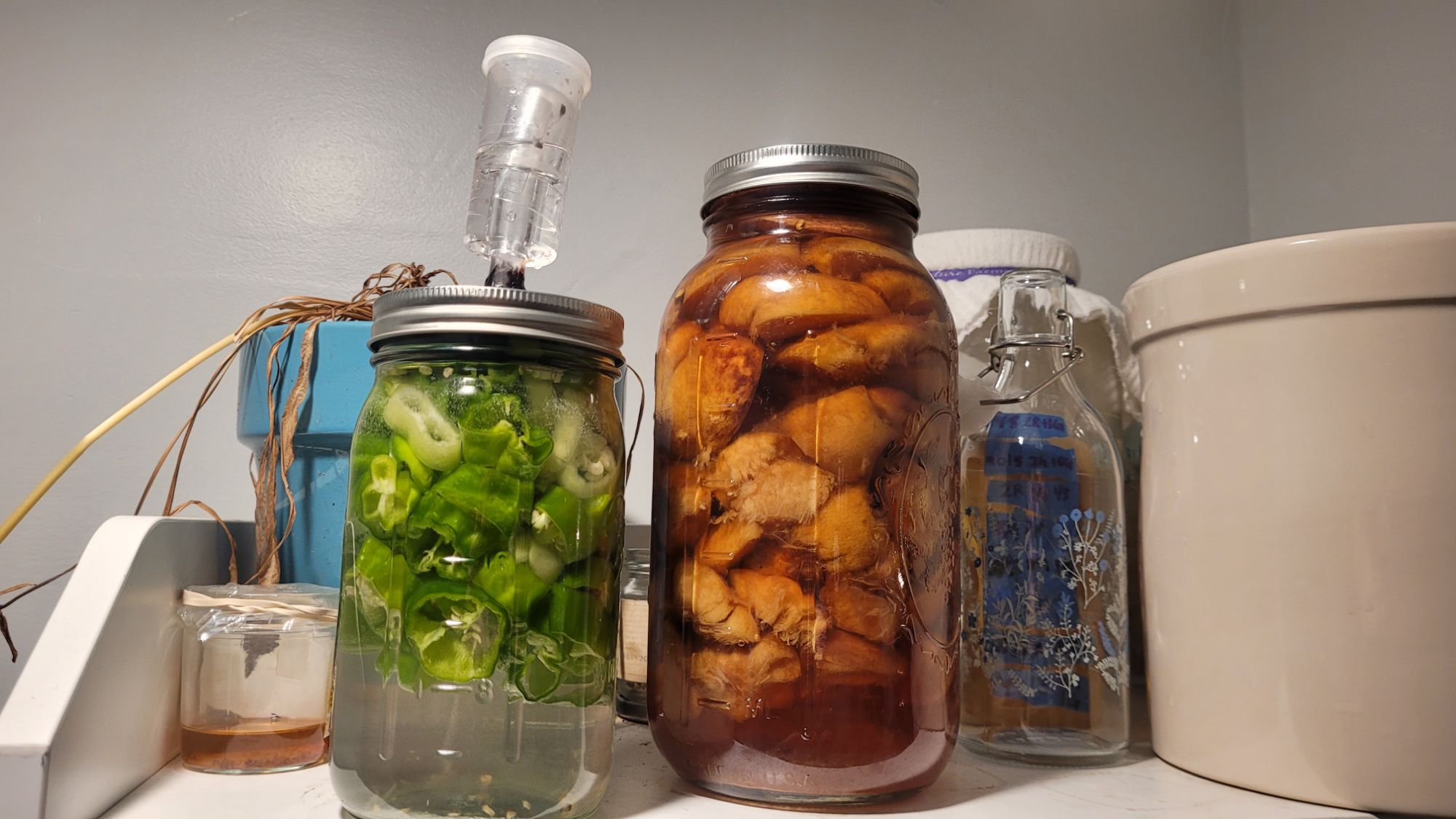
Leave a Reply